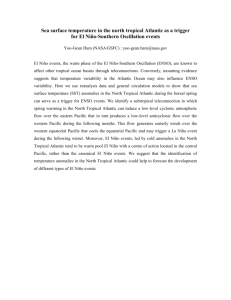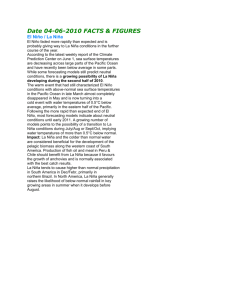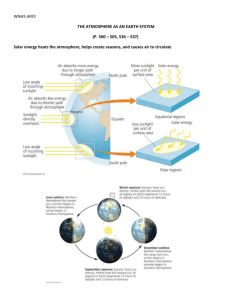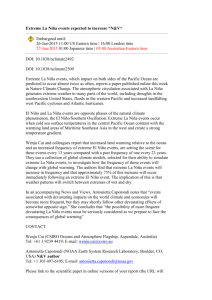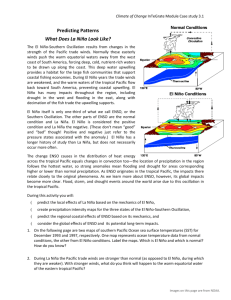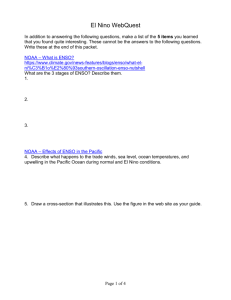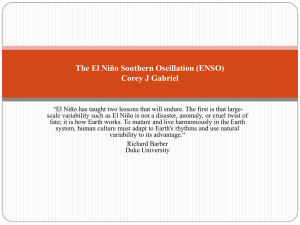Supplemental Notes – ENSO: El Niño and La Niña The El Niño
advertisement
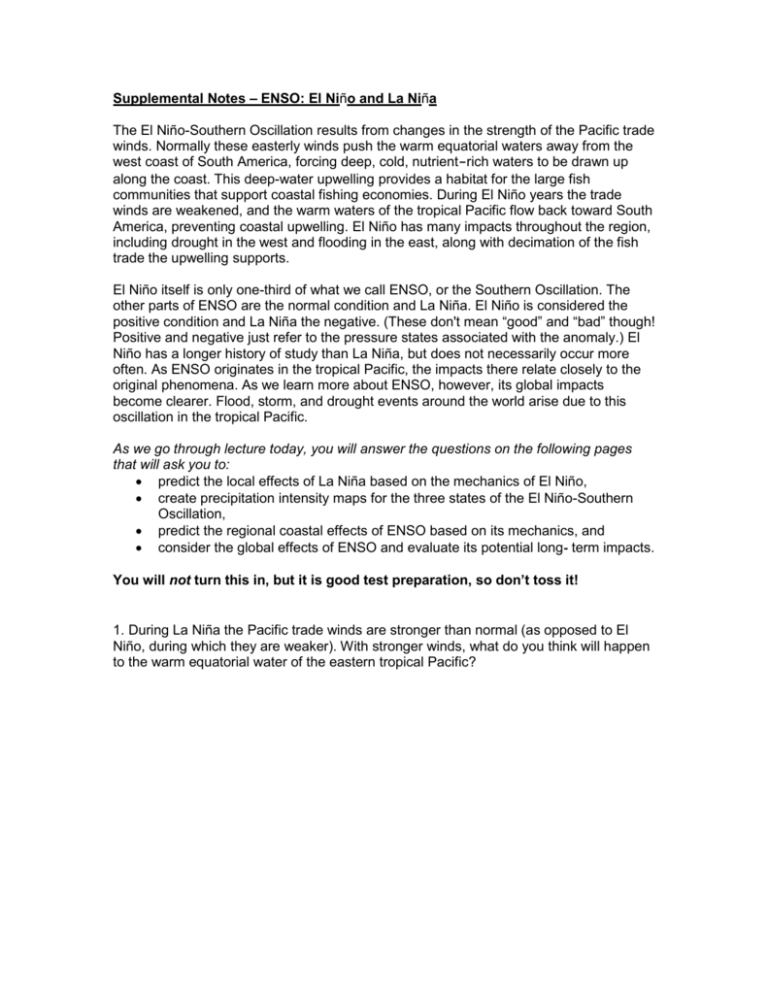
Supplemental Notes – ENSO: El Niño and La Niña The El Niño-Southern Oscillation results from changes in the strength of the Pacific trade winds. Normally these easterly winds push the warm equatorial waters away from the west coast of South America, forcing deep, cold, nutrient-rich waters to be drawn up along the coast. This deep-water upwelling provides a habitat for the large fish communities that support coastal fishing economies. During El Niño years the trade winds are weakened, and the warm waters of the tropical Pacific flow back toward South America, preventing coastal upwelling. El Niño has many impacts throughout the region, including drought in the west and flooding in the east, along with decimation of the fish trade the upwelling supports. El Niño itself is only one-third of what we call ENSO, or the Southern Oscillation. The other parts of ENSO are the normal condition and La Niña. El Niño is considered the positive condition and La Niña the negative. (These don't mean “good” and “bad” though! Positive and negative just refer to the pressure states associated with the anomaly.) El Niño has a longer history of study than La Niña, but does not necessarily occur more often. As ENSO originates in the tropical Pacific, the impacts there relate closely to the original phenomena. As we learn more about ENSO, however, its global impacts become clearer. Flood, storm, and drought events around the world arise due to this oscillation in the tropical Pacific. As we go through lecture today, you will answer the questions on the following pages that will ask you to: predict the local effects of La Niña based on the mechanics of El Niño, create precipitation intensity maps for the three states of the El Niño-Southern Oscillation, predict the regional coastal effects of ENSO based on its mechanics, and consider the global effects of ENSO and evaluate its potential long‐ term impacts. You will not turn this in, but it is good test preparation, so don’t toss it! 1. During La Niña the Pacific trade winds are stronger than normal (as opposed to El Niño, during which they are weaker). With stronger winds, what do you think will happen to the warm equatorial water of the eastern tropical Pacific? 2. Fill in the blank map below with La Niña sea surface temperature conditions based on your understanding of what a “normal” year and what an “El Nino” year looks like. Use colors or symbols to represent contrasting warm and cool SST. 3. Fish can't live in the waters off the northwestern coast of South America during El Niño years, causing the fish trade and livelihoods to suffer in these areas. Does the same phenomenon occur during La Niña years? Why or why not? 4. Based on what you know about SSTs in each phase of ENSO, create maps of precipitation intensity for El Niño, normal, and La Niña conditions on the three blank maps below, using colors or symbols to show contrasting high and low precipitation. 5. Given that coastal ecosystems are relatively accustomed to normal conditions, ENSO causes changes during both El Niño and La Niña years. In locations where it is wetter than normal, floods occur; while in those where it is drier than normal, drought ensues. Based on these general relationships and your precipitation maps above, identify the coastal impacts of El Niño and La Niña in the tropical Pacific. (Circle the appropriate options.) 6. Why do you think ENSO has global impacts? How could an ocean surface anomaly in the Tropical Pacific incite variations in other parts of the world? 7. If ENSO events became more frequent, what would happen to ecosystems and economies in locations subject to these weather variations, both in the tropical Pacific and around the world?
